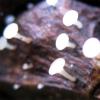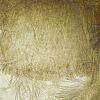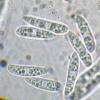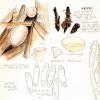
03-09-2010 11:45
Marja PennanenHello, yesterday evening I decided to go and pi

02-09-2010 00:32
 Martin Bemmann
Martin Bemmann
Hi, this one is from a dead branch of oak, stil

01-09-2010 23:07
 Raúl Tena Lahoz
Raúl Tena Lahoz
Hi to all! I have noticed a strange reaction for

31-08-2010 01:53
 Björn Wergen
Björn Wergen
Hi, I have found this small Peziza directly by

30-08-2010 09:29
Marja PennanenHello, this should have been a breakable mystery,

30-08-2010 09:14
Marja PennanenHello, as I mentioned I found something on the ne
Hymenoscyphuses? on cones
Marja Pennanen,
03-09-2010 11:45
yesterday evening I decided to go and pick those Hymenoscyphuses I found on Epilobium.
I'm just too curious and checked some interesting looking places on the way.
So I found some Hymenoscyphus like on pinus cones and tried to find them more and ended finding different looking ones, too. It was quite late, so the photos are nothing like perfect.
Here's the first one. They are about 0,5-1,5 mm wide and 1-2 mm high.
Marja Pennanen,
03-09-2010 11:49
Marja Pennanen,
03-09-2010 11:50
Marja Pennanen,
03-09-2010 11:55
Hans-Otto Baral,
03-09-2010 11:59

Re:Hymenoscyphuses? on cones
Woudl be important to see the spores at oil immersion. They are the most important feature. Anyhow I know such finds on cones and fear I have only names such as H. virgultorum.
Zotto
Zotto
Marja Pennanen,
03-09-2010 12:02
Re:Hymenoscyphuses? on cones
The spores had 2 bigger and some (if any) smaller droplets, 12-17x3-4.
Asci 75-85x6-7 and paraphyses with VB's were 2-3 micrometers wide.
I tried Lugol, but these are once again those, which must be put to pure Lugol to see, what happens.
The reaction was very, very weak, if any.
But it's nice, that after rains fungi just happen :)
Asci 75-85x6-7 and paraphyses with VB's were 2-3 micrometers wide.
I tried Lugol, but these are once again those, which must be put to pure Lugol to see, what happens.
The reaction was very, very weak, if any.
But it's nice, that after rains fungi just happen :)
Marja Pennanen,
03-09-2010 12:07
Hans-Otto Baral,
03-09-2010 14:46

Re:Hymenoscyphuses? on cones
That's good! I used virgultorum for finds on woody twigs:-) But I actually sometimes doubt the value of substrates. F-ex., H. menthae grows on almost everything, though mostly on herbaceous stems.
Your photo of the asci, could you please send this by email? The ascus bases lok like having arosen from croziers (two septa visible), and at double resolution I would getmore sure. Therefore and because of the shorter spores I now see it cannot be virgultorum. I suspect a relation to H. calyculus, a group of lignicolous species which has croziers.
Zotto
Your photo of the asci, could you please send this by email? The ascus bases lok like having arosen from croziers (two septa visible), and at double resolution I would getmore sure. Therefore and because of the shorter spores I now see it cannot be virgultorum. I suspect a relation to H. calyculus, a group of lignicolous species which has croziers.
Zotto
Marja Pennanen,
03-09-2010 15:17
Re:Hymenoscyphuses? on cones
Hello,
I looked for croziers, I've been doing that for hours and hours lately, but can never be sure, though sometimes notices the differences in ascus bases.
Anyway here's somekind of a photo of the other spores. E-mail will be send soon.
I noticed now the IKI+ (blue) reaction.
Marja
I looked for croziers, I've been doing that for hours and hours lately, but can never be sure, though sometimes notices the differences in ascus bases.
Anyway here's somekind of a photo of the other spores. E-mail will be send soon.
I noticed now the IKI+ (blue) reaction.
Marja
Hans-Otto Baral,
03-09-2010 18:57

Re:Hymenoscyphuses? on cones
O.k., now I see more clear. You are right when mentioning Hymenosc. lutescens in your mail to me, so the second one is clearly that species which is close to H. epiphyllus and needs to have croziers. Here an old drawing of mine, photos you find on the DVD, HB 7865.
For the one with scutuloid spores, I agree, the asci are without croziers, and I ave no name for it.
Zotto
For the one with scutuloid spores, I agree, the asci are without croziers, and I ave no name for it.
Zotto
Marja Pennanen,
03-09-2010 19:07
Re:Hymenoscyphuses? on cones
Thank you :)
Now I know, that my suspicion of the ealier determinations of H. lutescens are in vain.
The other kept it's secrets or maybe something was revealed - eventhough not the species ;)
Thanfully: Marja
Now I know, that my suspicion of the ealier determinations of H. lutescens are in vain.
The other kept it's secrets or maybe something was revealed - eventhough not the species ;)
Thanfully: Marja








